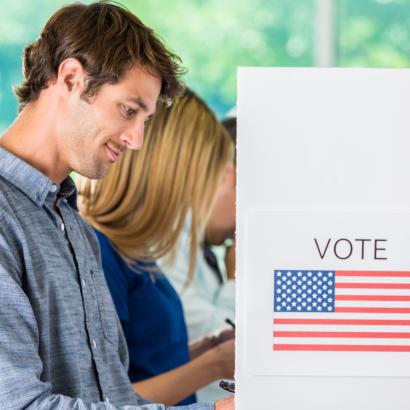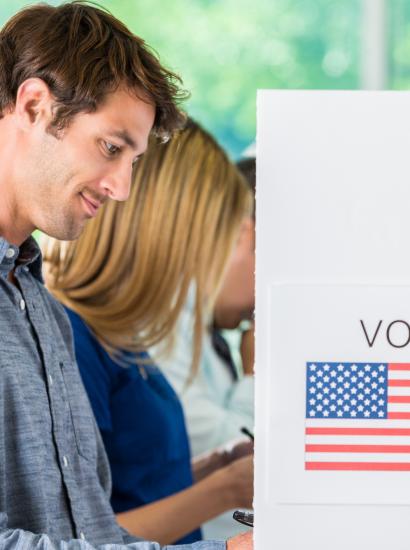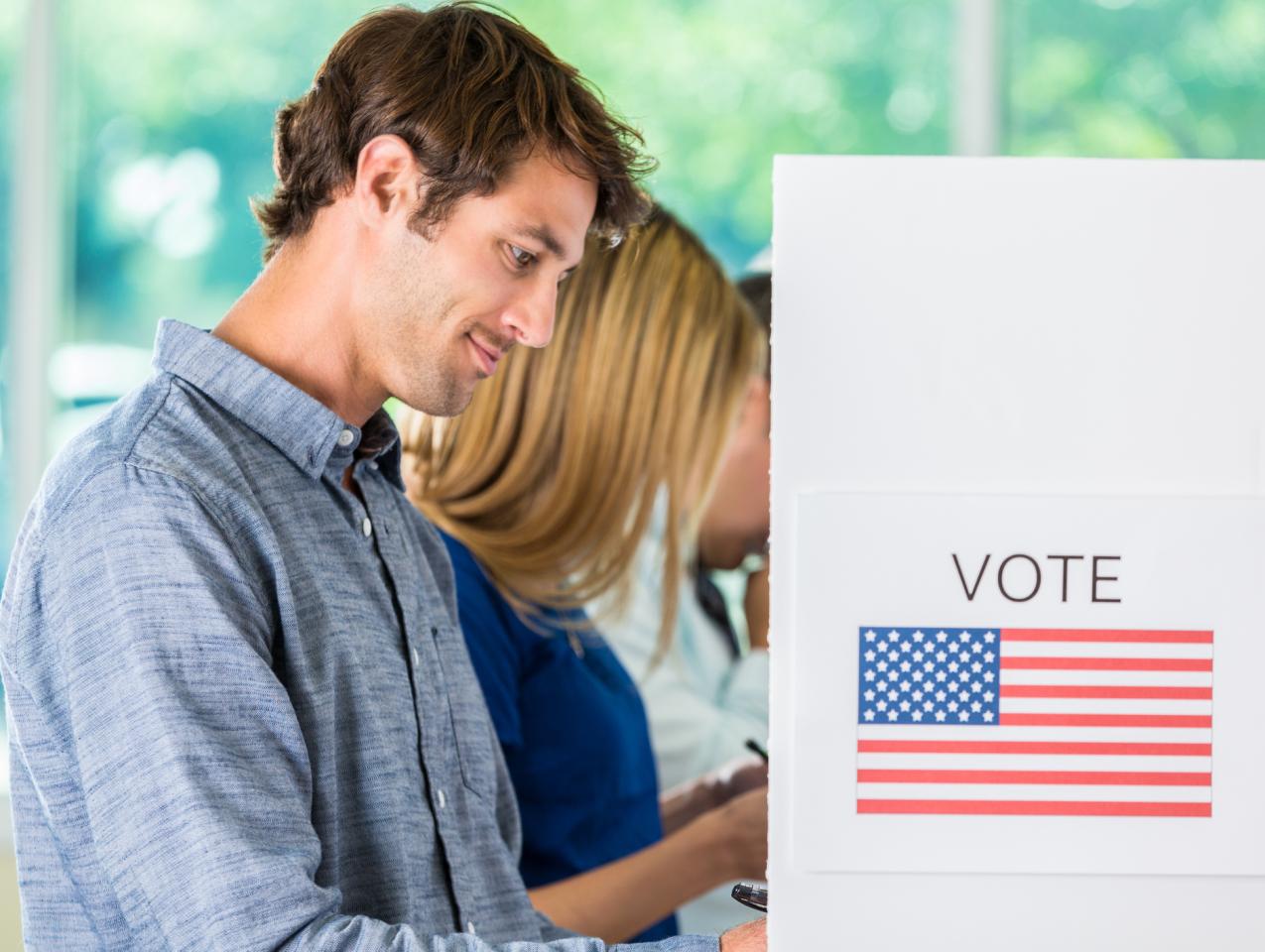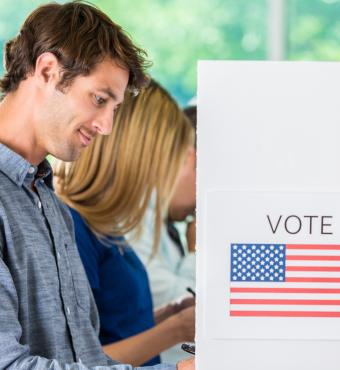- Politics, Institutions, and Public Opinion
- Campaigns & Elections
- State & Local
- California
America’s nation-state goes to the polls tomorrow, where candidates receive the high honor of holding public office and ideas pass or fail.
On the eve of this election, my journalism-school roots compel me to ask a few basic questions:
Who (Will Bother to Vote)? No matter what the outcome, rest assured that California is not in store for a repeat of the last midterm vote and its historically lousy turnout (just 42 percent back in 2014— 4 percent less than what election experts had expected and shattering the previous turnout low of 50.6 percent).
On an optimistic note: the turnout in California’s June primary showed an uptick in enthusiasm—37 percent being a dramatic improved on the 25 percent who showed up in June 2014.
Think of this as a quantity and quality argument. Both parties want to turn out their bases . . . in the right places. A healthy Republican turnout in Orange County, for example, is essential to holding on to the endangered GOP congressional districts there. A strong Democratic turnout in the San Francisco Bay Area? In one of the most liberal pockets of America, that would be equivalent of Churchill’s admonition to “make the rubble bounce.”
So which side holds an advantage going into tomorrow’s final vote? California Republicans are betting on an anti-tax backlash in the form of Proposition 6 (it would repeal the increase in the state gas tax approved last year by California lawmakers). For California Democrats, it’s a familiar formula—one that worked for Barack Obama but not Hillary Clinton: get the vote out among women, Latinos and millennials.
What (Is in a Word)? A verb that’s proved problematic for Republicans in both California and nationwide: “repeal.”
GOP House and Senate candidates ran on “repeal” in the 2010 and 2014 midterm votes, promising to do away with Obamacare. But as certain provisions of the Affordable Care Act have proven popular with voters (for example, protecting pre-existing condition coverage), GOP candidates have had to soften the rhetoric.
This may be one of tomorrow’s takeaways if, as expected, Proposition 6 receives a thumbs-down.
The initiative’s opponents have mounted a smart campaign that centers around pushing back against the tax reduction with tales of woe (told by the likes of firefighters and minivan moms, not politicians) about traffic delays and stunted infrastructure improvement.
Not surprisingly, the Prop 6 message has morphed into “repeal and replace”—pass Prop 6 and repeal the gas-tax hike, then approve a 2020 ballot measure that would end California’s high-speed rail project and shift funds to infrastructure.
Dictionary words not too far from “repeal”: “reassess” and “rethink.”
Where (Is Jerry Brown)? He first ran for statewide office in 1970. When he leaves office next January, it ends a six-run in California politics by father and namesake son.
Still, California Governor Jerry Brown has had little to say in this election—even though the temptation may be great. (Lieutenant Governor Gavin Newsom, his likely successor, is running on a theme of “courage for a change”—does that mean Brown is neither?) And the governor is sitting on a campaign war chest approaching $15 million.
One reason why Brown likely hasn’t been a presence in the governor’s race: because he and Newsom don’t see eye to eye on all matters (most notable, implementing single-payer health care in California).
It’s a passing of the torch to a new generation (if Newsom wins tomorrow, let’s see if he appropriates JFK’s line for his inaugural address). Perhaps Brown, who’s twenty-nine years Newsom’s elder, doesn’t want to highlight the difference(s).
Another theory: Brown bristles at any and all talk of “legacy,” which is what final-year events easily become—strolls down memory lane.
And yet another theory: Newsom could have asked for Brown’s help, but there’s no guarantee what the governor will say.
Consider Brown’s comment during January’s budget unveiling: “We have a whole political system that judges our executives by the state of the economy, over which they have virtually no impact.” He added, “The next governor is going to be on the cliff. . . . What’s out there is darkness, uncertainty, decline, and recession. So good luck, baby.”
One thing Brown will be doing in 2019: chairing the Bulletin of Concerned Atomic Scientists. That means he’s in charge of the “Doomsday Clock.”
Some comedy writes itself . . .
When (Will Republicans Compete)? Last week, the Cleveland Browns parted ways with head coach Hugh Jackson.
Jackson’s three-year record: three wins, thirty-six losses, one tie.
Dating back to 2006, California Republican candidates are a collective two wins and twenty-nine losses in statewide races (this includes state constitution, US Senate and presidential contests).
Adding insult to injury: a non-Democrat stands a good choice of becoming State Commissioner tomorrow. That’s Silicon Valley entrepreneur Steve Poizner, who was elected to the same post back in 2006 . . . when he ran as a Republican.
What will get California Republicans back in the game?
It’s one-part message, a second part messenger.
Dating back to 2002, Republicans in the Golden State have relied on gubernatorial hopefuls making their maiden candidate runs in the Golden State (that includes Arnold Schwarzenegger in the October 2003 recall election).
Rookie candidates are a hit-or-miss proposition. Sometimes they have natural talent, like Arnold. Other times, they struggle—for a variety of reasons, including limited resources and limited street smarts.
But Republicans also have to revisit their message.
Using this survey by Stanford’s Bill Lane Center for the American West as a guide, a California GOP gubernatorial candidate in 2018 should be running on immigration, health care, taxation, environment, and jobs. Crime, a perennial campaign favorite for conservative candidates, finished a distant seventh on the list of “the most important problems facing California today.”
Instead, Republican John Cox is running on Prop 6, a desire to rearrange the State Legislature and voters’ frustrations with a beleaguered Department of Motor Vehicles.
The guess here: hospital waits trump DMV lines.
Why (The “Blue Wave” Did or Didn’t Emerge)? In a word: Trump.
While the president has done his best to make the midterm vote a referendum on his substance and style, California Democrats are just as willing to make it an anti-Trump referendum.
Trump has called Newsom a “clown”; Newsom likens Trump to a Stephen King character. Add the plot twist of Newsom’s ex-wife dating Trump’s namesake son and the Sacramento-White House feud resembles a bad telenovela.
But Newsom’s also running TV ads making it clear that a vote for him is a vote to resist the Trump agenda. Thus, as the New Yorker phrased it, the election boils down to the Democrats’ ability to “harness the alarm of moderate, the rage of progressives . . .”
As far as California is concerned, Trump was a historically bad candidate in 2016. He received just 31.6 percent of the presidential vote, the most lopsided defeat in the Golden State for a Republican in eighty years.
In 2016, Trump collected 4.483 million votes in California. That was 356,000 fewer votes than Mitt Romney’s performance in 2012.
But look at the Democratic side: Hillary Clinton improved on the 2012 Democratic total by almost 900,000 votes.
If the same proves true tomorrow—Democrats gain as Trump drives away voters—it will be a long night in California for the president’s party.
















